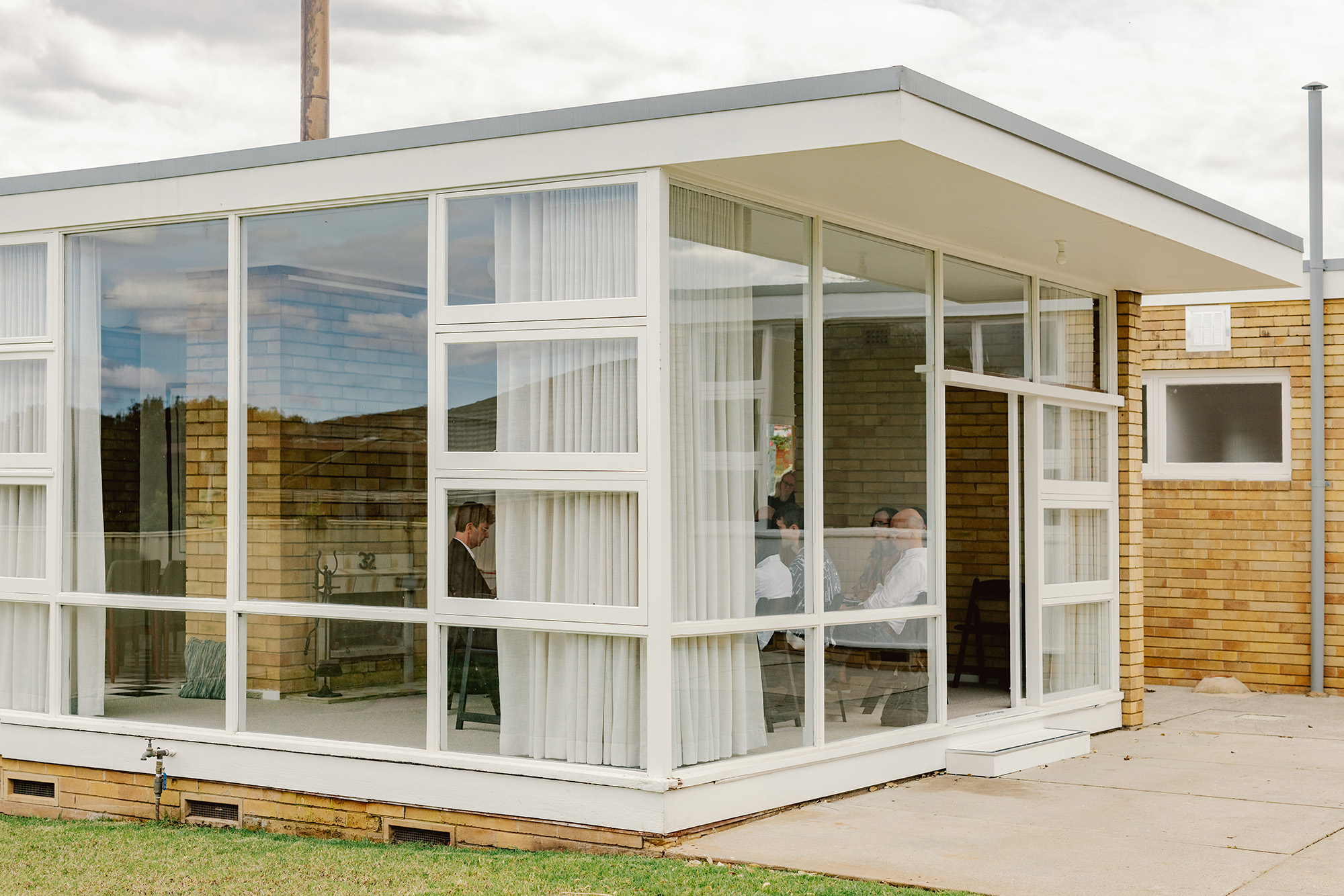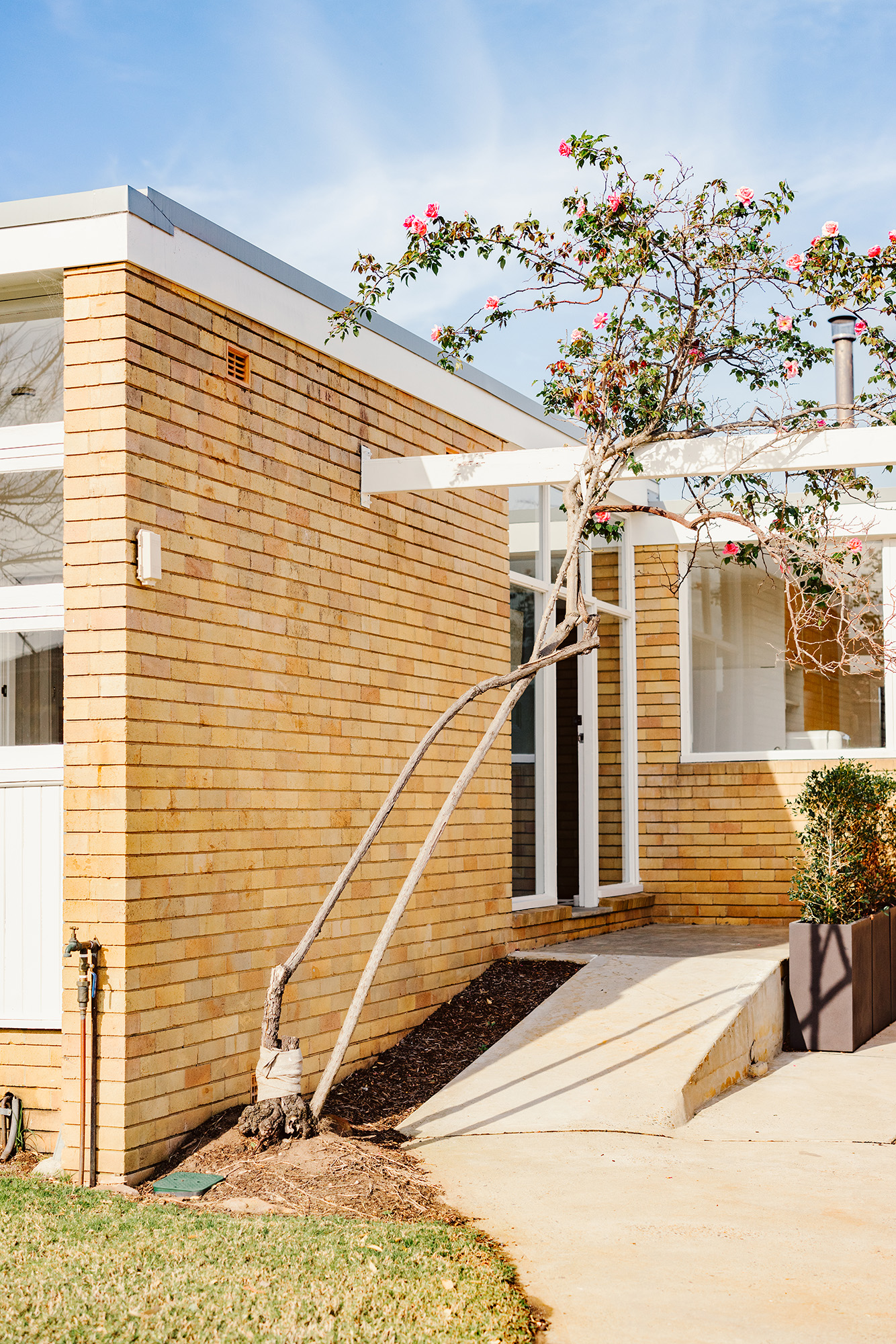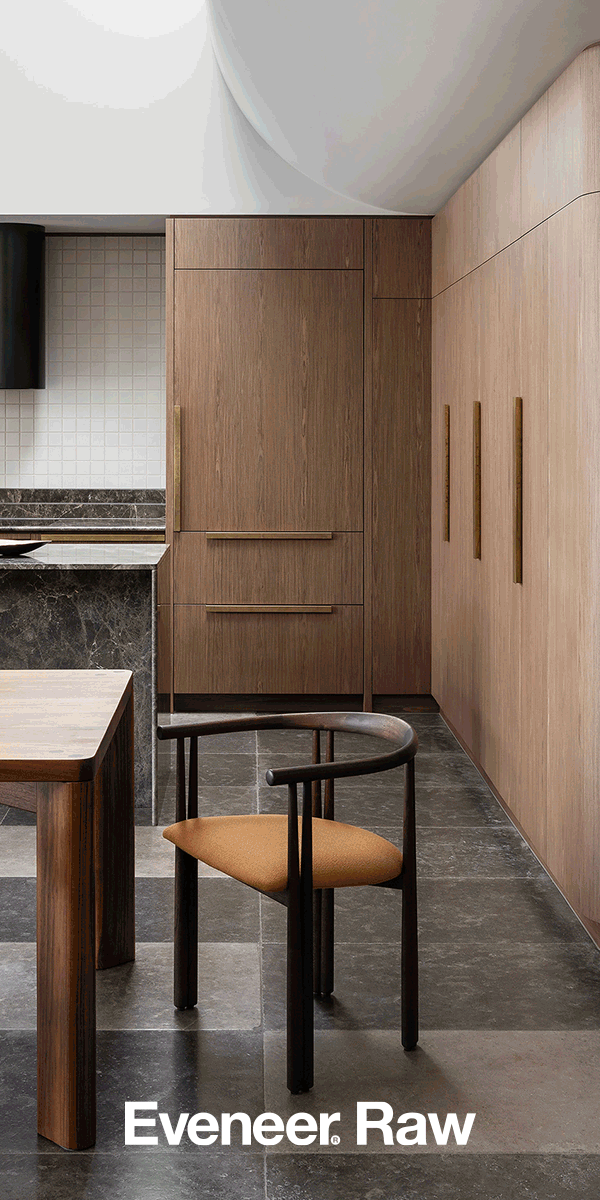BEAU Architects
The Whitlam House
Keinton Butler, Creative Director of Sydney Design Week 2023, asked Union to program an event to address the role of architectural journalism in weaving the power of design into broader cultural narratives. On an afternoon in September, we invited guests to attend Writing Rooms at the Whitlam Prime Ministerial Home – a workshop hosted by the Whitlam Institute and Western Sydney University at the family home of the Hon. Gough Whitlam AC QC. The workshop prompted guests to reflect on the spatial quality of the house – its links to mid-century Australian domestic society/politics and the modern design of the house in reference to themes of public versus private, conservation versus use, modification over time, purpose, enduring relevance, and the function of landscape in this context. To contextualise the event, Union invited Professor Charles Rice to reframe and re-present ideas and observations from that afternoon.
Essay
Charles Rice
Photography
Bee Elton

Garden view of The Whitlam House, located in Sydney’s West
There is something uncanny about walking into a former prime minister’s home, especially one as unassuming as this. Although the original inhabitant has long since departed, standing in this house,
I feel a strange sensation: a mixture of expectation and suspicion. The expectation has to do with the notion that the house might give up insights or secrets about its former, famous resident. Suspicion lingers as an admonishment of such a thought; no such insight would or should be gained by simply being here. Rather, what I have discovered is a perfectly modest Modernist house – and that is all that can be seen.
As I wander through the open front door – is it really this easy to enter such a house? – I am reminded of the opening lines of Ernst Bloch’s 1965 essay ‘A Philosophical View of the Detective Novel’. In this essay, he writes : “Something is uncanny – that is how it begins. But at the same time one must search for that remoter ‘something’, which is already close at hand. The hidden ‘who’ is in demand, but when it is told as a story, it is not highly regarded.”
This gnomic pronouncement captures the allure of entering Gough Whitlam’s former home, as well as the conundrum this entails.

On this particular morning, a group has gathered at the house to try to write the former prime minister into existence. He was certainly in demand – the main attraction. But what stories would, or could, be told? What status would they have in relation to the official accounts of Whitlam and his life and career, the details of which are already so well known? There is a risk that, in Bloch’s words, whatever is written will simply not be “highly regarded”. The writing could entail, in a pejorative sense, merely domestic concerns – details unworthy of the grand political narratives that burnish reputations.
Prior to Bloch, Walter Benjamin wrote about the detective novel in his 1928 book One-Way Street. He connected it directly to the cosy yet overstuffed domestic interiors of the 19th century, writing that the
“character” of these interiors had been “penetrated by a number of authors who, as writers of ‘detective stories’ – and perhaps also because in their works the bourgeois pandemonium is exhibited – have been denied the reputation they deserve”. Again, there is the uncanny allure and the denial of significance, because detective work reveals things that should remain hidden.
Benjamin and Bloch emphasised that the detective novel is, by definition, the story of a crime. This holds the key to its debasement as a literary genre. It does not narrate the grand arc of the protagonist’s journey through life. Rather, it methodically pieces together the fragments of an event that has led to their demise. This character is almost always absent and the detective places great store by the ordinary objects and traces that remain.

Detection is a prominent frame for understanding the way in which we ‘look around’ a domestic space that is not ours, the way we cross a private threshold looking for clues of the inhabitant. In this sense, every original detail in the Whitlam house seems portentous. In the corner of one of the bedrooms stands Nicholas Whitlam’s childhood desk. Next to it, decorative figures drawn directly onto the walls have been preserved. The laundry taps appear to be the remnants of an archaic washing infrastructure. Outside in the middle of the back lawn stands a Hills hoist, the concrete path underneath sized perfectly for a washing basket’s wheeled trolley. What stories might emerge from these traces?
This mode of investigating the specific details of a domestic arrangement comes up against another kind of authoritative form: architecture itself. The idiosyncratic and analytical gaze of the detective is overridden by the codes of the architectural historian, codes that are more generalisable and comparative. To appreciate what is significant at this place, it is the very existence of the building – not the traces of its inhabitation – that matters. Whitlam’s commissioning of architect Roy Appleton to design a modern house in (then semi-rural) Cabramatta in 1956 certainly tells us something about the nature of suburban development in Sydney at that time. It provides a means of measuring how developmental practices and attitudes to architecture have changed over time, and it indicates the aesthetic values of a future prime minister for whom a major policy initiative established the idea of a national estate, that there exists cultural heritage, both natural and built, that should be recognised and managed for future generations.
The preservation of the Whitlam house attests to the success of this idea. But what we expect to find when we cross its threshold still eludes the certainties that this designation implies. The desk, decorative drawings and Hills hoist lure writers over the threshold, tempting them to enter the site with a mixture of expectation and suspicion. The narratives they might construct would find their origins in a ‘suspect’ literary form, but, in this way, they would be freed from the obligations of an official account. For writers, and for culture more generally, that presents a significant opportunity.

A climbing rose frames the front door. It has been growing on the property for over 40 years.

The house is modest in proportion but has abundant natural light and cross ventilation.

A framed copy of the ‘It’s Time’ policy speech given by Gough Whitlam on the 13 November 1972 hangs in the newly restored Whitlam house.

The checkerboard floor in the hall and kitchen was produced at the same factory as the original flooring in the late 1950s.

